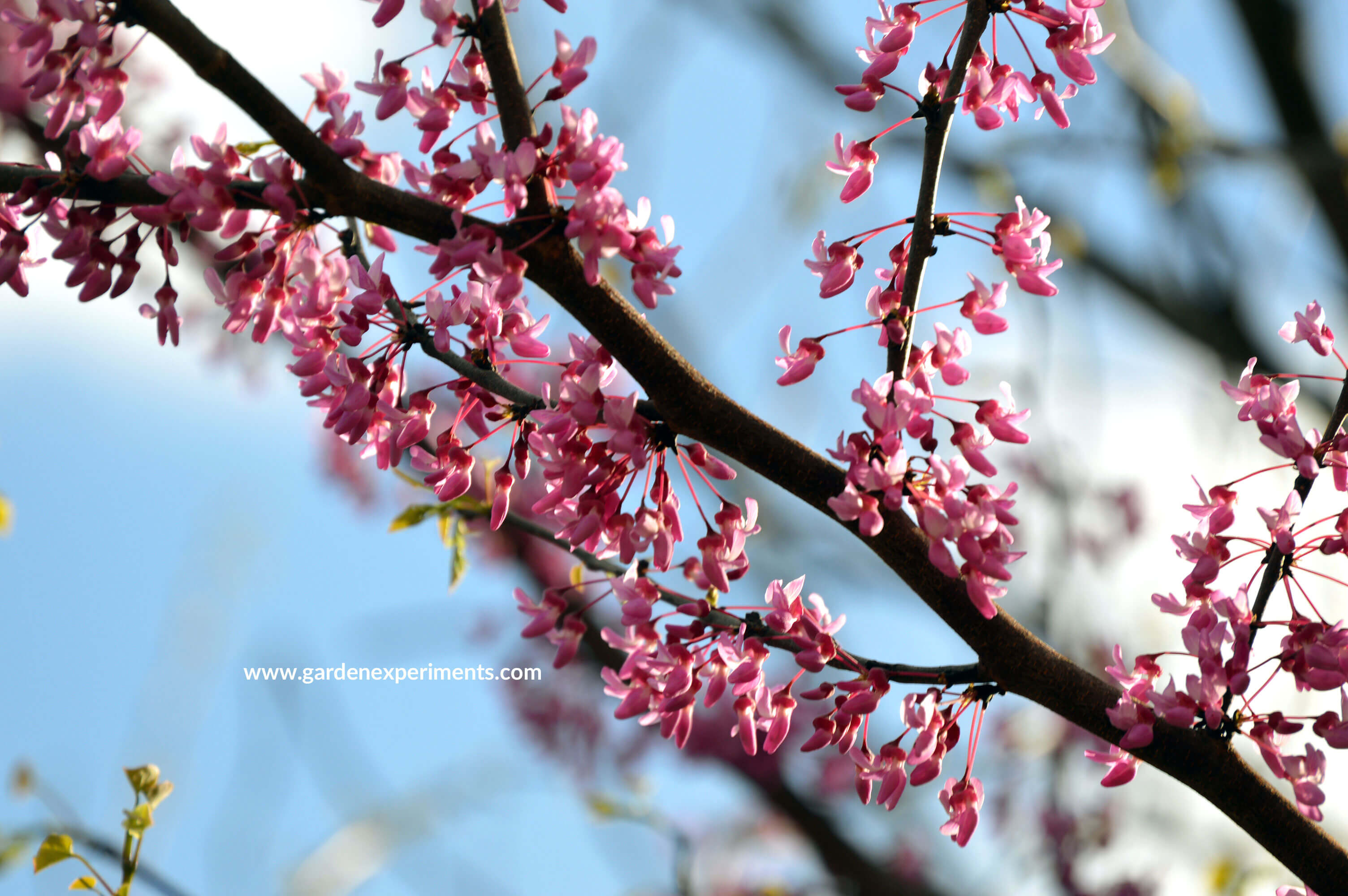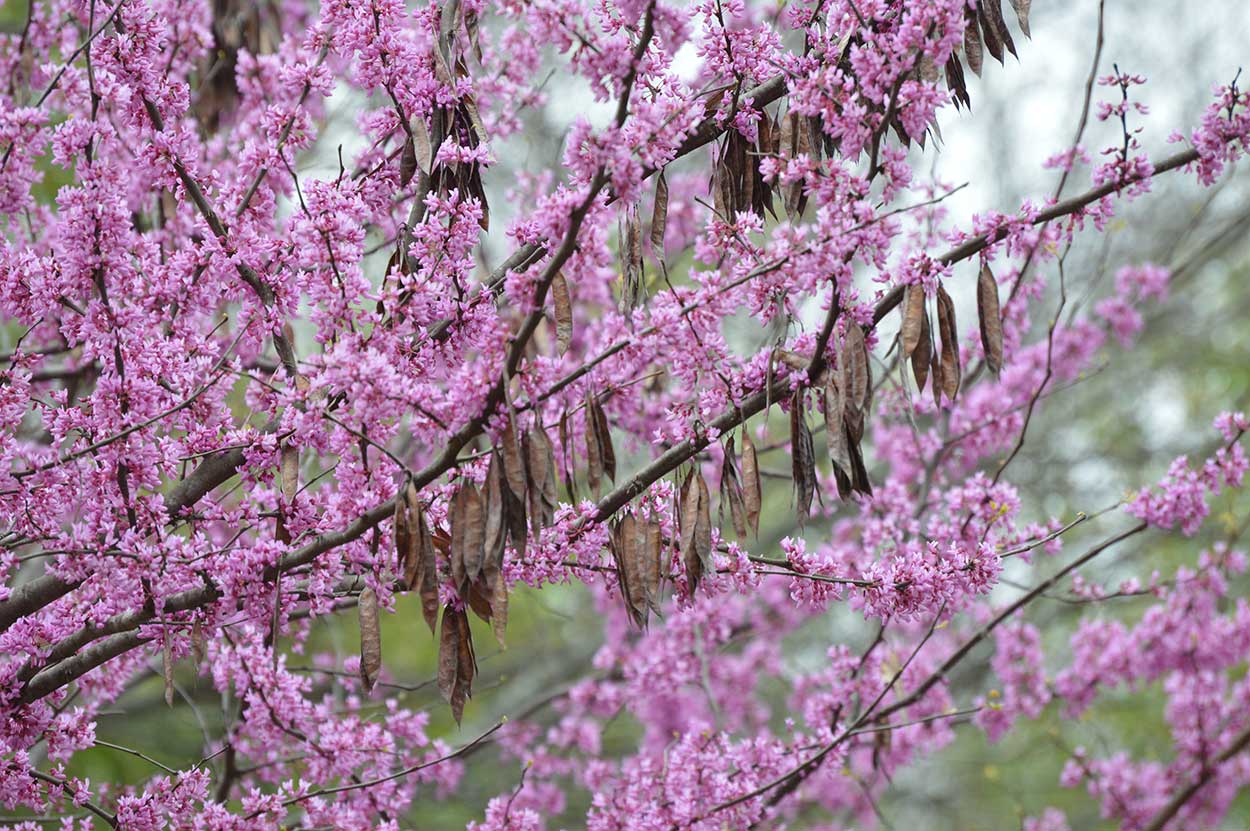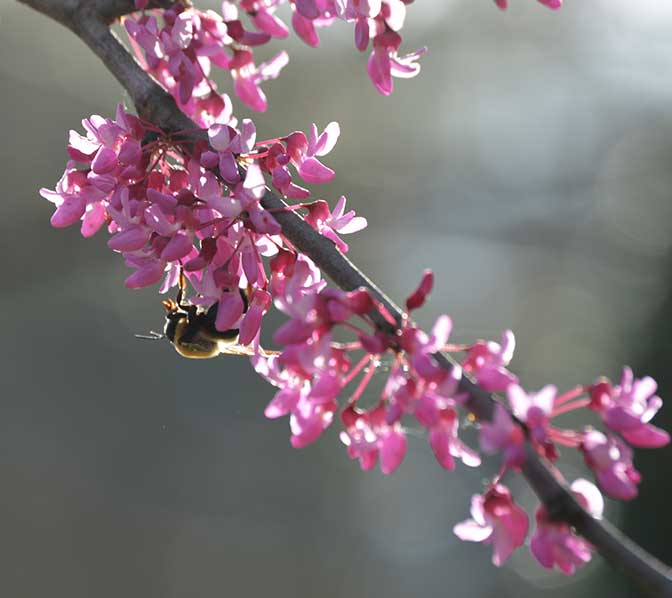The pink-hued blooms of native eastern redbud trees (Cercis canadensis) are one of the first signs of color that I see in March. It’s a sure sign that spring is on its way and that more color will begin to pop up in the lawns and gardens in our neighborhood.
After months of cold weather and the barren landscapes of winter, the hint of mauve and pink that begins to unfold along the branches and trunk of a redbud tree in late March is a welcome sight.
Why You’ll Love This Native Tree
- Early Spring Blooms: Before the leaves even appear, this tree bursts into pinkish-purple blossoms, creating a stunning display from March to April.
- Wildlife Benefits: The flowers are a nectar source for early pollinators, including bees and butterflies. You might see dozens of bees at once feeding on the blooms. Once the flowers fade, the tree produces seed pods that attract songbirds.
- Adaptable & Resilient: The eastern redbud thrives in a variety of soils, tolerating full sun to partial shade. It grows 20-30 feet tall, perfect for small yards or as an ornamental focal point.
- Beautiful Leaves: After flowering, heart-shaped leaves emerge in shades of green or reddish-purple (depending on the variety), adding a lush, textured look to your landscape. In the fall, the leaves turn a bright yellow.

Wildlife Use of the Eastern Redbud Tree
The tiny flowers of the redbud are an early source of nectar and pollen in spring, showing up long before many other plants are blooming. We have often seen dozens of honeybees, bumble bees, and other native bees buzzing around the flowers in a feeding frenzy. You can walk to within inches of the bees and they won’t pay you any mind as they hungrily feed on the flowers.
Vital Early Food Source for Bees
The Xerces Society for Invertebrate Conservation has deemed this tree of special value to native bees because it attracts large numbers of native bees as well as provides nesting materials or nesting structures for them.
Fall Food Source for Songbirds, Mammals, and Other Birds
In the fall, the pea pod-shaped seedpods are a welcome food to birds and mammals alike. You might find cardinals, chickadees, rose-breasted grosbeaks, or squirrels feeding on the seeds. In our forests, the seeds are food for white-tailed deer, wild turkey, and bobwhite quail.
Host Plant for Butterflies & Moths
The eastern redbud is a host plant for several butterflies and moths in its native range. These include Henry’s elfin butterfly, Io moth, spicebush swallowtail, whitemarked tussock moth, and white flannel moth.
Other butterflies and moths feed on the nectar including silvery blue butterfly, zebra swallowtail butterfly, and dreamy duskywing butterfly.
Food and Medicine
People have used the flowers in foods such as salads, breads, and pancakes (source: Lady Bird Johnson Wildflower Center). It was also used for medicinal purposes historically (source: Arbor Day Foundation).

How to Care for a Redbud Tree
Redbuds are commonly found out in open fields or as an understory tree in forest openings or along the edges of forests. They tolerate a wide variety of soils from clay to sand, but they prefer moist, well-drained soil.
Light Conditions
Plant your tree in either part-shade or full sun. If you’re in a hot and dry climate, part shade is preferable to full sun.
If planted in full sun, regular water will help the tree do well. You might consider adding some mulch around the tree to keep the roots cooler. In part-shade, the tree tolerates dry periods well.
Growth Conditions
Hardiness Zone: The eastern redbud is hardy in zones 4 to 9.
Growth rate: The growth rate of the eastern redbud is medium, growing about 10-20” each year.
Height and spread: the eastern redbud is a small tree, reaching average heights of about 20 to 30 feet with a spread of 25 to 35 feet.
Leaves: The leaves of the eastern redbud are heart-shaped and paper-like in texture. They start out with a bit of maroon color, turning green when fully grown, and pale yellow in the fall.
Lifespan: The eastern redbud has a shorter lifespan, lasting for an average of 20-25 years.

The Story of the Redbud, the Judas Tree
Did you know this tree has a story associated with it?
As stated in Matthew 27:5, Judas Iscariot purportedly hung himself after Jesus was condemned. The story related to the redbud tree is that he hung himself on a Cercis silquastrum, a Mediterranean redbud tree. The previously white flowers turned the bright pink/magenta of the current flowers from the blood or from the shame.
Although the eastern redbud is not the same species of tree, the story has become associated with it as well.
However, upon inquiries with biblical scholar Paul Jacobs, there is no biblical reference to a specific tree or this story. The origin is unknown.
